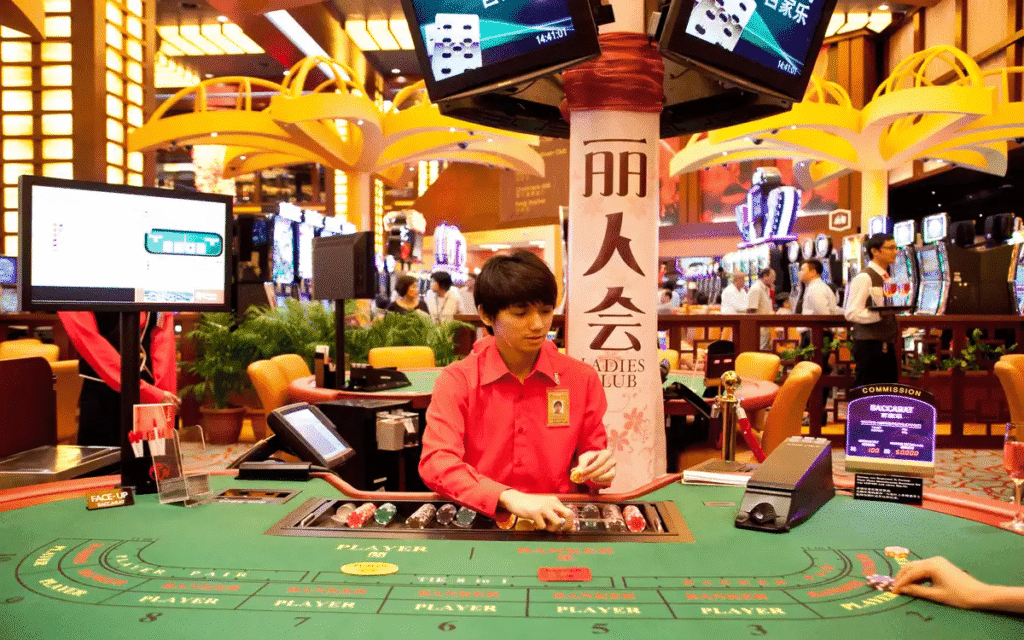Baccarat is one of the oldest card games, gaining particular popularity in online casinos due to its simplicity and low house edge. However, despite its apparent straightforwardness, many players experience consistent losses. The main reason is a lack of a systematic approach and awareness of the associated risks.
Today’s gaming market is rapidly evolving, encompassing traditional formats as well as mobile apps, live tables, and automated simulators. Amid this diversity, it’s crucial for players not only to understand the rules of baccarat but also to maintain control over their gameplay, choose safer scenarios, and develop a personal strategy.
By “mindful play”, we mean a style of gaming in which the player evaluates potential risks in advance, sets limits, and avoids relying on myths or luck. This approach is particularly relevant to baccarat, a card game where even professionals often depend on chance. However, with careful calculation and a calm, strategic mindset, it’s possible to tilt the odds slightly in your favor. Still, as with any form of gambling, the house always maintains the advantage. This is an important principle to remember and revisit every time you engage with a gaming platform.
Mathematics and odds: how baccarat works
Before discussing strategies or behavioral patterns, it’s important to understand the mathematical foundations of the game. Baccarat is neither poker nor blackjack—there’s no room for bluffing or card counting. However, understanding probabilities can help reduce the role of chance in your perception of the game.
In classical baccarat, players have three main betting options:
- Banker – bet on the Banker to win,
- Player – bet on the Player to win,
- Tie – bet on a tie.
The theoretical odds are distributed as follows:
| Bet | Theoretical probability | Casino advantage (House Edge) |
| Banker | 45,86 % | 1,06 % |
| Player | 44,62 % | 1,24 % |
| Tie | 9,52 % | 14,36 % |
As you can see, betting on the Banker is statistically the most advantageous option. Even after accounting for the casino’s commission (typically 5% of Banker wins), it remains the least risky bet over the long term. In contrast, betting on a tie, despite its high payout (8:1 or 9:1), carries an extremely high house edge and is not recommended for systematic play.
Another important factor is the number of decks used. Most online versions of baccarat use 6–8 decks, which significantly affects the precise calculation of probabilities. With fewer decks, the odds are slightly adjusted, but the overall logic of the game remains the same.
It’s also important to understand that baccarat has no cumulative effect: each hand is independent of the previous one. Tracking “streaks” of Player or Banker wins is nothing more than a visual illusion. While many interfaces provide a history of past rounds, it’s crucial not to fall into the trap of seeing patterns where none exist.
A mindful approach begins with accepting that no bet can guarantee a win. However, choosing the least risky option and understanding the real house edge can already reduce the likelihood of losses and eliminate random, impulsive decisions.

Financial discipline: managing your bankroll and limits
One of the main causes of financial losses in online baccarat is a lack of bankroll management. Even players who understand the rules and theoretical odds often lose money because they cannot control their game budget. Mindful play is impossible without clear boundaries: how much you can spend per session, how much you’re willing to lose, and at what point it makes sense to stop after winning.
The first step before playing is to define your game bankroll. This should be separate from your personal finances. The gaming budget should be intended solely for entertainment, and losing it should not cause stress. Ideally, divide it into sessions and stick to a daily limit.
A second crucial aspect is setting loss and win limits. Many experienced players follow a simple rule: if losses reach 20–30% of the planned session budget, it’s time to take a break. Conversely, if you reach a predetermined profit limit, say, a 50% gain over your initial allocated amount, it’s wise to end the session.
It’s also important to resist the urge to “chase losses”. Baccarat is not a game where losses can be quickly recovered. Every decision should be deliberate. Bets should not increase spontaneously — only according to a preplanned system if you are using progressive strategies. Even then, caution is necessary: popular systems like Martingale can still result in a total bankroll loss during a losing streak.
Money management is the foundation of long-term stability in any gambling game, and online baccarat is no exception.

The Psychology of play: staying calm in baccarat
Despite its apparent simplicity, baccarat can quickly become an emotional rollercoaster. Excitement from winning, frustration from losing, the urge to “chase losses,” or the hope of “catching a streak” are all psychological traps that even experienced players often fall into. Without emotional self-control, mindfulness, and therefore safe, play is impossible.
Emotions and decision-making
Mindful play requires a clear separation between emotions and decisions. One effective tool is a session timer: set a 20–30 minute limit and stick to it. This helps prevent “getting stuck” in the game and losing control. Another useful technique is keeping a simple betting journal – recording each wager and its outcome reduces impulsiveness and strengthens self-discipline.
It’s also important to recognize triggers: fatigue, frustration, alcohol, and time pressure all impair rational decision-making. Many mindful players choose to avoid gambling when experiencing strong emotions altogether.
Psychological resilience in baccarat is just as important as understanding the math of the game. Even the most precise strategy becomes meaningless if a player cannot stop at the right moment.

Betting strategies: how to choose without getting carried away
In the world of online baccarat, there are many betting strategies. Among the most popular are Martingale, 1-3-2-6, and Fibonacci. Each follows a specific logic: increasing bets after losses, decreasing them after wins, or alternating sequences. However, it’s important to understand that no system guarantees a win – the game is fundamentally based on probability, and each new hand is independent of the previous one.
Choosing a strategy should be a deliberate decision. It needs to align with your bankroll, available time, and personal goals. Players who practice smart play often avoid progressive betting systems in favor of fixed wagers combined with careful analysis of game dynamics. This approach minimizes risk and allows you to play more rounds while maximizing your chances of success.
Equally important is taking breaks and recording the outcomes of each session. If you notice emotional lapses or deviations from your plan, even while following a strategy, it’s a warning sign. No system, no matter how well designed, works without discipline.
In the end, a strategy is not magic – it’s simply a tool. What matters most is how you use it.
Conclusion
Baccarat is one of the few gambling games where simple rules coexist with a significant potential for player control. Success relies not only on understanding probabilities but also on maintaining psychological balance, sticking to a strategy, and avoiding the illusion of control.
Modern technology provides players with an increasing array of tools — from time and loss limits to session analytics and educational platforms. Use them. These tools are not restrictions but pathways to long-term comfort and smarter play.
When kept under control, baccarat can be part of an intellectually engaging pastime. Without such discipline, even the most successful winning streak can quickly turn into risk.
Refresh Date: October 8, 2025







